Have you ever put a jigsaw puzzle together? Was it easy? Or did you struggle the whole way through? Building a puzzle is a lot like writing a novel, and I’m going to tell you how. But first a little story about how I arrived at this revelation.
Back in the fall and winter of 2020, with the pandemic in full swing, puzzles were a hot commodity. We seemed to have forgotten all about the drawers full of adult coloring books and every configuration of art pens, pencils, and crayons. I mean, they were right there under our noses, begging to be thrown back into the game. But no, that was so five years ago. We’d moved onto jigsaw puzzles without so much as a fleeting look back.
Did you know that much like the Great Toilet Paper Shortage of 2020, jigsaw puzzles, too, experienced a period of short supply? It’s true. But it didn’t happen in earnest until closer to the end of the year when everyone was suddenly on the hunt for the perfect Christmas present. It’s just a distant memory now, but there was a time where many of my local bookstores and game shops couldn’t keep them on the shelves.
That being said, my very thoughtful husband did manage to get his hands on one of these high-demand Christmas gifts. (Side note: not once in our twenty years together has he ever seen me do a puzzle.) He watched me tear into the wrapping paper, eager to see my reaction to “The Greatest Bookstore in the World” puzzle he’d so carefully picked out. “Oh, yay! A puzzle!” I’d said, trying desperately to sound genuine, failing miserably. The problem was that I knew myself too well—that those thousand pieces would never see the light of day. The truth is, I used to be highly suspicious of people who would waste precious hours assembling puzzles only to tear them apart right afterward—or worse, glue them together and hang them on a wall!
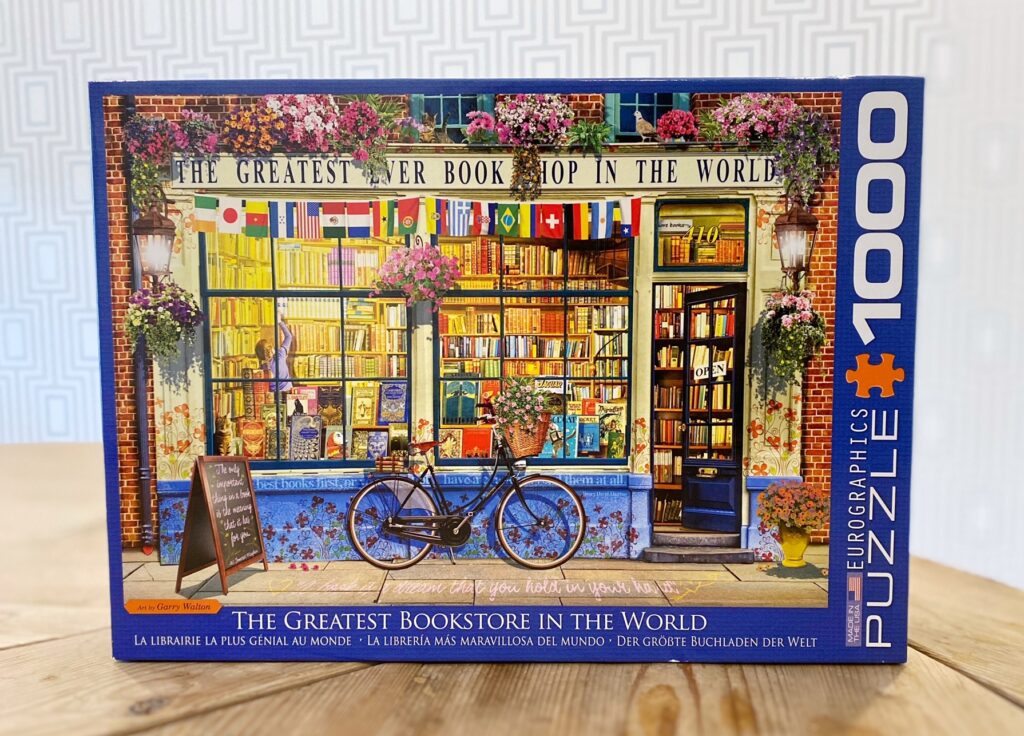
The puzzle that started it all.
Did a similar scene play out in your living room? Did you put the puzzle stealthily aside and move onto the next gift bag, the tall skinny one which would reliably contain your favorite Cabernet Sauvignon? Come on, don’t be shy! Fess up!
But, if you’re like me, when January rolled around, something inside you shifted. You realized you were reaaallly bored. While you slouched on your couch scrolling through endless Facebook posts and funny cat videos on YouTube, your gaze wandered over to the still-shrink-wrapped “Greatest Bookstore in the World” puzzle on the bottom shelf of the coffee table. You groaned. You asked yourself, “Is this what it’s come to?”
Begrudgingly, you dumped the bowl of apple-spice potpourri in the garbage and wiped a thick layer of dust off your dining room table. “I’m not going to enjoy this,” you insisted as you spread out those 1000 weird-ass shapes in front of you. But then as you sorted all the edge pieces into a pile and began assembling them, a funny feeling rose in your heart. Was it joy? Excitement? Perhaps relief is a better description. Yes. You were relieved to have something else to do.
By the middle of March, you and your significant other were building two puzzles a month, sometimes treating the final dozen pieces as a competition. Who would get the last one? Oh yes, it happened. Both my husband and I became fanatical about puzzles. Not to the point where we would glue them together, but definitely to the point where our necks, having been bent at an unnatural angle for too long, told the story of a swift and deeply rooted addiction.
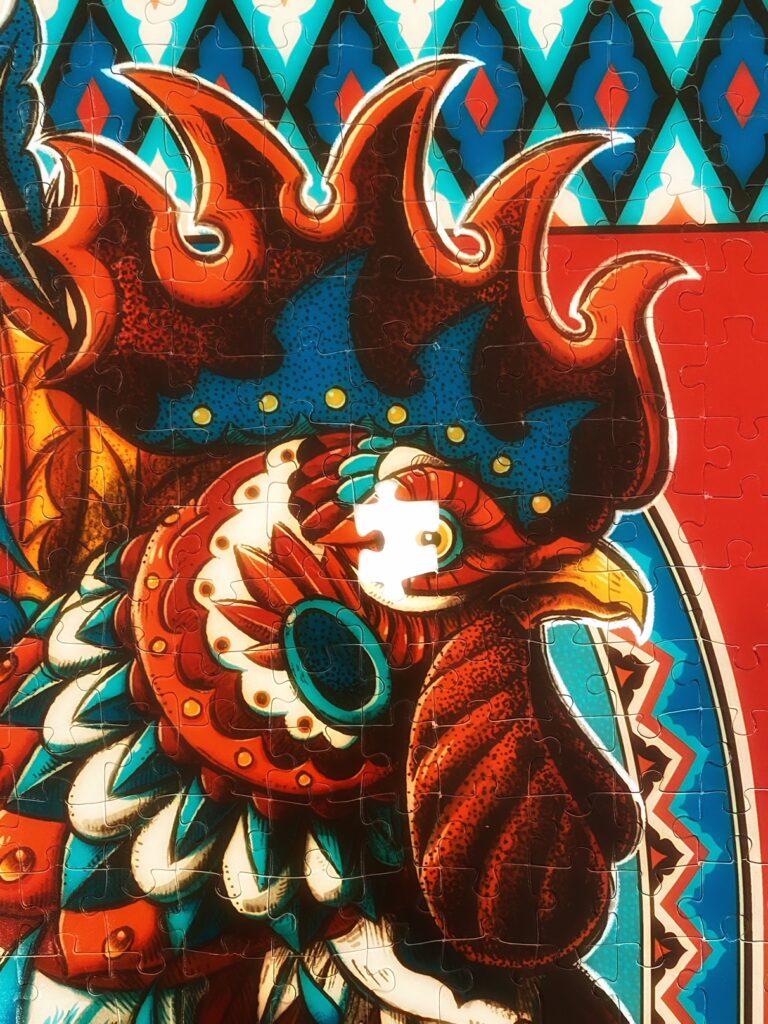
And just like the rush of adrenaline you get from putting that last piece into place, so too is the feeling you get from typing “The End” on your novel. But I’m jumping ahead of myself here. Let’s start at the beginning. Here’s how doing a puzzle is just like writing a book.
The frame: your novel’s outline.
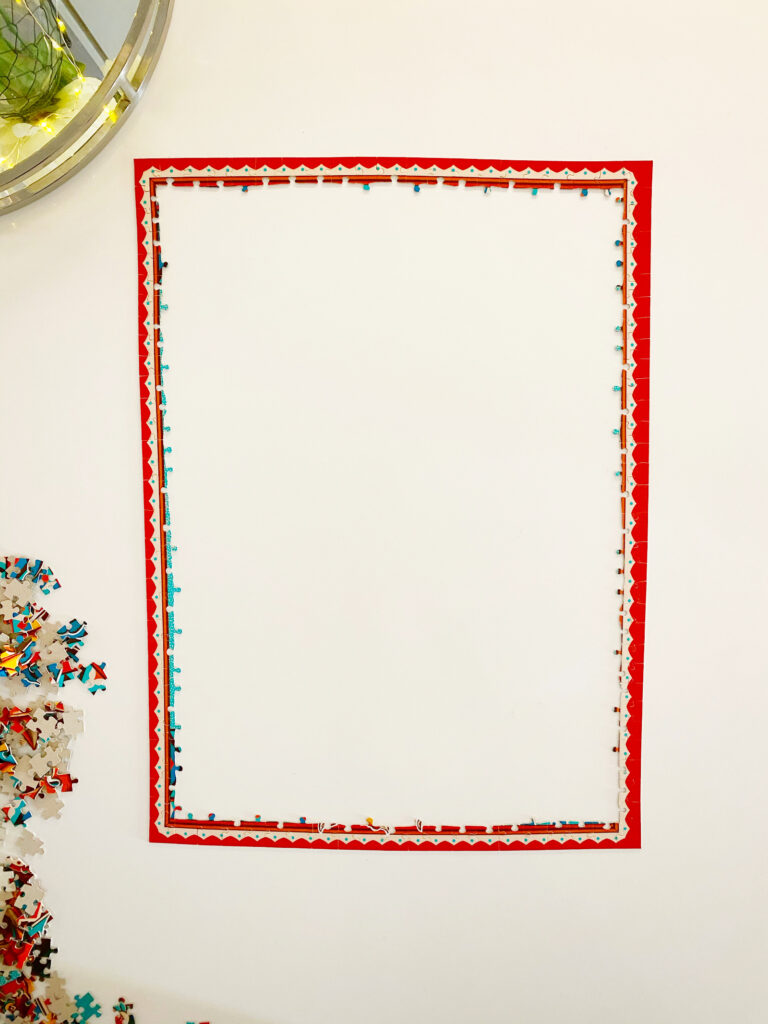
I didn’t have an outline for my first book, TimeBlink, so I decided to give it a whirl in book two. Now halfway through my first draft, I’ve mostly stuck to the basic framework, though the finer details have fallen by the wayside. My outline was probably too specific. The characters are telling me they don’t WANT to fall in love. Or that they have no intention of risking their lives for the good of the group. That’s okay. The chapters are still ending up exactly where I wanted them to, making it remarkably easy to begin the next one. As I said, I didn’t outline my debut novel, and because of that lack of focus, it took me over four years to write it! Not this time. I couldn’t stand the suspense.
Enter the characters (and all the predicaments they get themselves into).
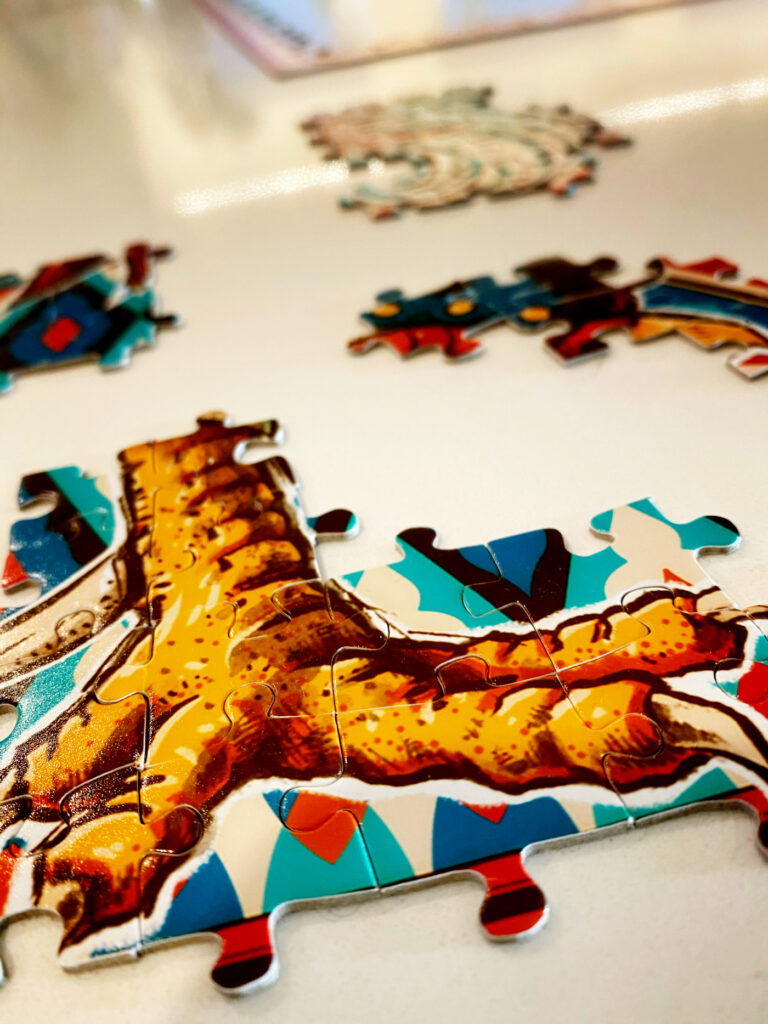
A writer can only graze the surface when it comes to the people who populate the story. Those five or six pieces nestled together represent what the character looks like, what she does for a living, who he’s married to, how much he hates cats, her uncanny ability to tease the truth out of criminals. The more pieces you can add to that vignette, the more invested the reader will be in your character’s plight.
Those vignettes can also represent scenes and chapters. Again, the more detail you can show without actually telling your audience how to think or feel about it, the more willing they will be to come along for the ride. Readers aren’t stupid. They can figure it out for themselves. So instead of writing She was angry and hot and couldn’t believe her ears, you can draw the reader into the scene with action and dialogue: She wiped the sweat from her forehead with the back of her hand and stared Morley up and down. “You’re not serious, are you?” she said. I love reworking sentences to give them more clout, even if it’s not always easy.
Next comes the dialogue, a huge part of your romance or fantasy novel or psychological thriller.

No matter what genre you write in, your characters are gonna talk to each other. Just look at that pile of words! But each piece represents a vital snippet of conversation between two or more characters, and with any luck, each snippet will advance the story in a meaningful way. Therein lies the most important thing I learned from my editor: if a conversation (or a scene or even a whole chapter) doesn’t add substance—no matter how brilliantly written—get rid of it! With haste!
Scenes that don’t quite fit.
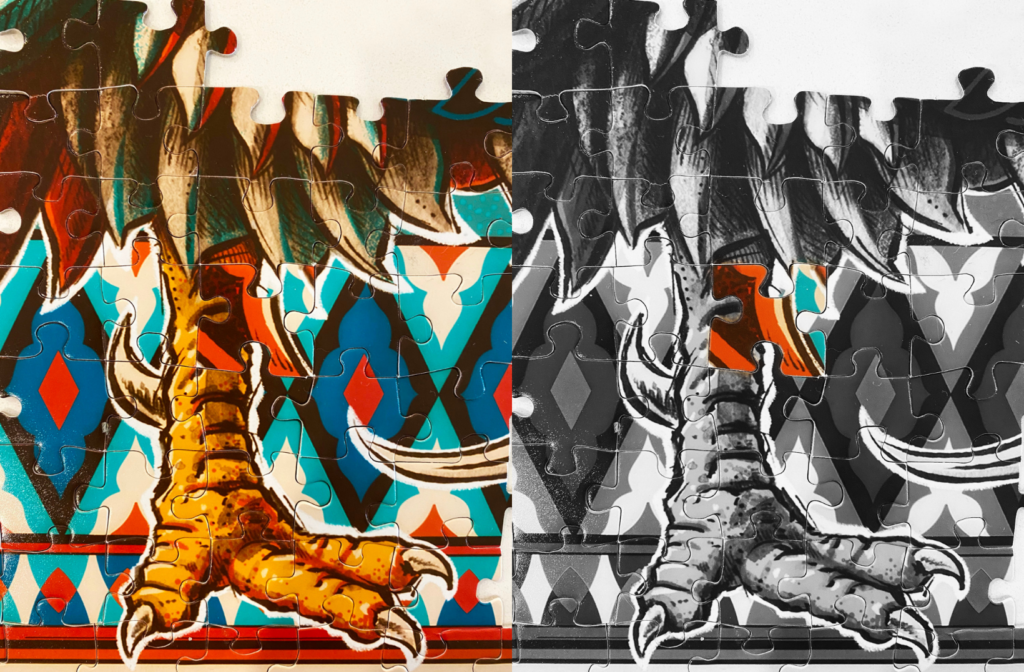
Here’s an example of a scene that fits perfectly at first glance, but upon closer inspection, you realize it doesn’t belong there at all. That doesn’t mean it can’t go somewhere else. Sometimes it means simply relocating it to the next paragraph; other times it will work better in a previous chapter. Fear not. If you can’t see the misfit, your editor surely will.
Sometimes your characters will want to go off and do their own thing.
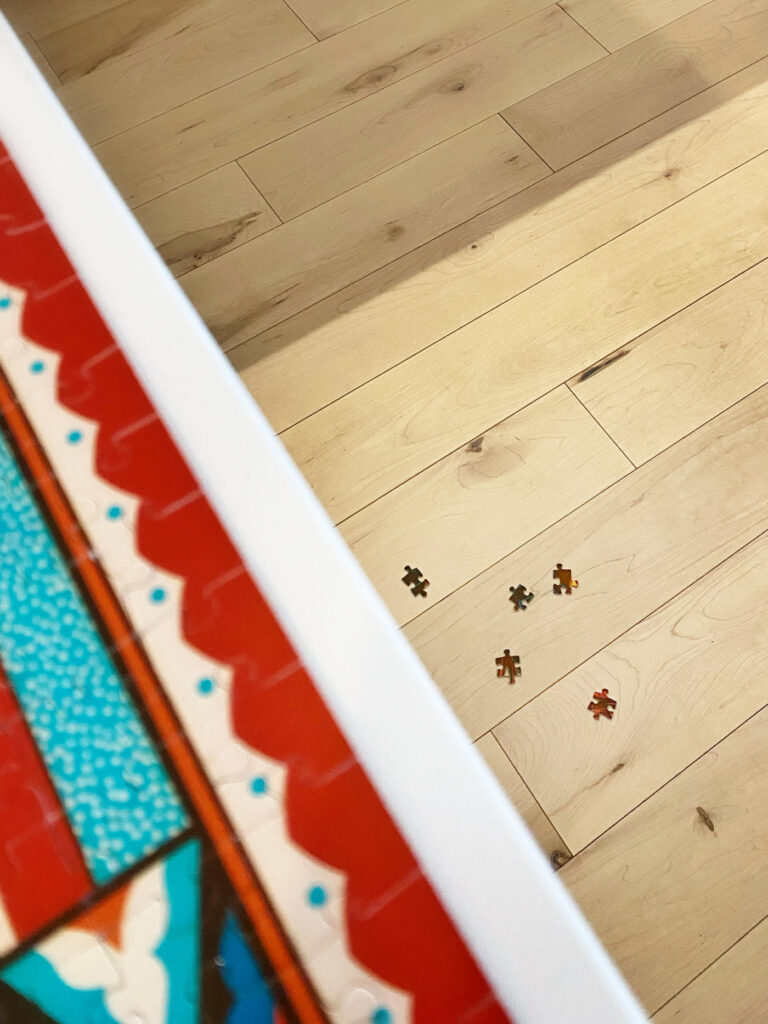
This has been happening regularly during the writing of TimeBlink: Flight 444. One of my characters was supposed to hang in the shadows of my protagonist, but as I got going on the story, I found her presence too robust and increasingly difficult to ignore. So, I decided not to fight it. I picked up the pieces and started over. The best part is that this character has added a feisty edge to a plot that had originally been a little flat. Restructuring for the win!
Professional editing: before and after
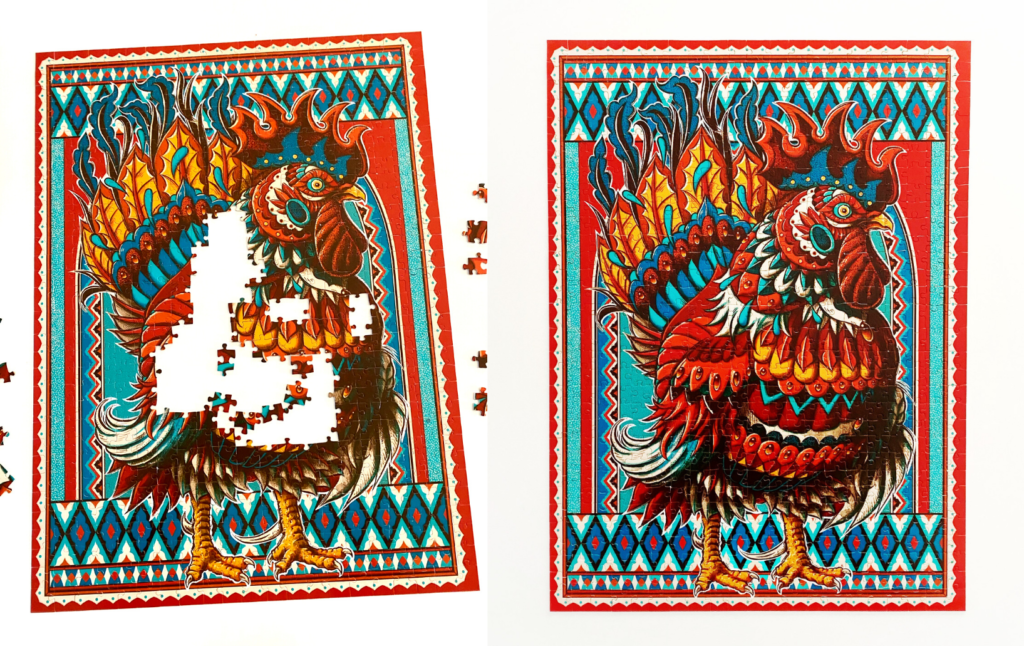
One of the things that independent authors will sometimes skimp on is hiring a good editor or even a proofreader. They may try to do it themselves in order to save a few bucks, but in the end, it will cost them much more: sales. And that’s the least of their worries. If their book is riddled with errors, they should expect a few two-star ratings if not a negative review from a passionate reader. Why chance it?
I spent the money on a full developmental edit for TimeBlink, particularly since it was my debut novel. I’m so glad I did. My editor provided pages upon pages of notes pointing out the big-picture problems concerning plot holes, character inconsistencies, and unnecessary scenes and also performed a full copy edit. The latter included a careful examination of the punctuation, spelling, grammar, word repetition, jargon use, and, to a lesser degree, fact-checking. Once you’ve had that level of support to refine your product, I defy you to fly solo next time. I certainly won’t.
The finished product includes a professionally designed cover.
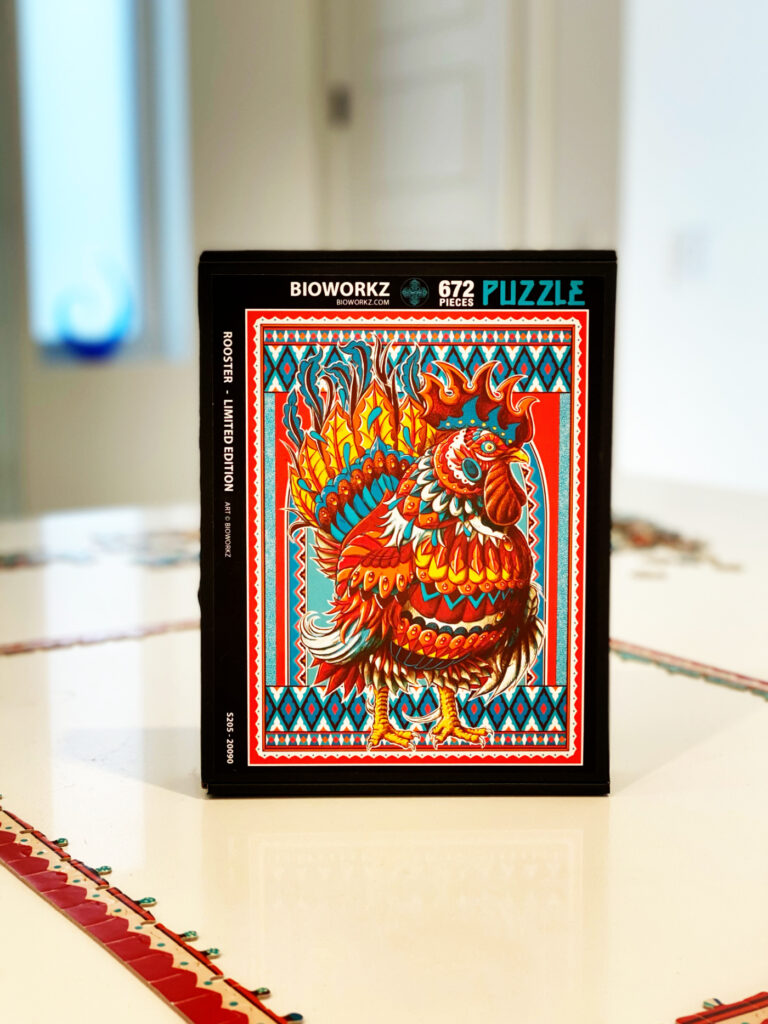
Maybe you’ve written the next War and Peace or Harry Potter franchise. Good for you! But without a professionally designed cover, your masterpiece is doomed to sit on the shelf collecting dust. An aspiring author should never leave this part of the puzzle to chance. Hiring a designer will help that novel stand out from the kajillion other books on the market and maybe even send it skyrocketing to best-seller status.
There you go—one person’s take on how building a puzzle compares to writing a novel. Oh, if only it were that easy! If only the words and scenes and plot twists came to you effortlessly and the characters conformed to your vision the whole way through. Like a 300-piece kids’ puzzle. However, there are times you can spend an hour refining one sentence or trying to figure out how your character is going to end up at the airport when you mentioned he was stuck in an elevator three chapters back; that’s a hulking 40,000-piece Ravensburger (don’t believe me, do you?).
I’m not quite that brave. Since embarking on my own puzzling pursuit, I’ve only tackled 1000-piece puzzles or less, and the stories I write—a mix of psychological thriller, time-travel romance, and suspense—reflect that simplicity.
So, are you good at puzzles? Chances are you just might be able to write a book!
Drop me a comment about the kind of story you’d like to write, or if you’ve already written one, include a link to your book in your comment. I’d love to help you spread the word. If you’d like to read more posts about writing and a grab-bag of other topics (dogs, anger issues, mothers, monkeys, and martinis to name a few), be sure to sign up for my monthly Writerly Stuff…Mostly newsletter.
By the way, the super cool Rooster puzzle featured in this post is from The Secret Puzzle Club and comes with a Certificate of Authenticity. Nothing like taking this new hobby to the next level!
